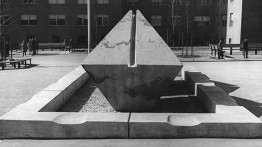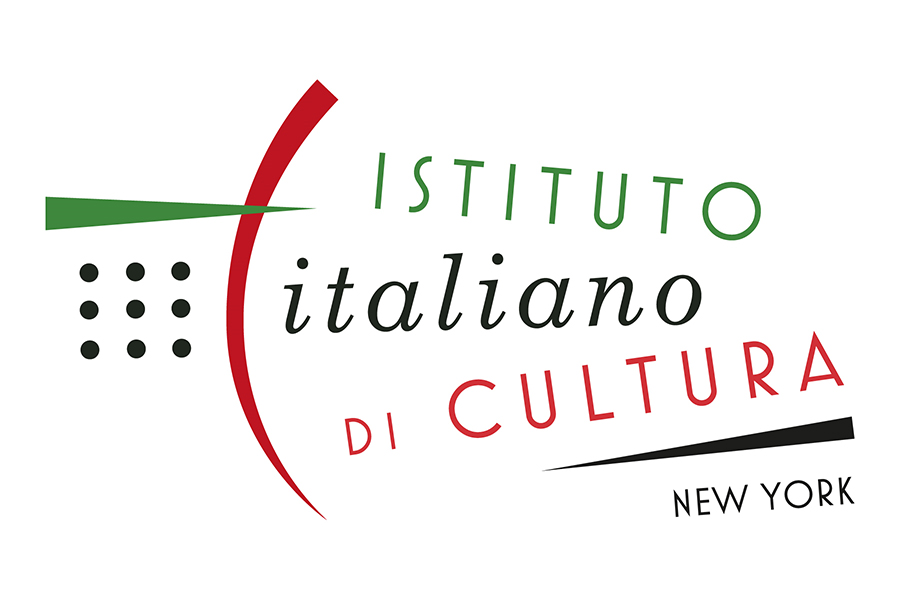Nivola in New York: Panel Discussion
Monday, March 9, 2020, 6:30 - 8pm

Stephen Wise Recreation Area, 1963. Richard G. Stein, Architect. Humphrey Sutton, photographer.
Italian Cultural Institute of New York
686 Park Ave, New York City
To RSVP for this event, please click here.
In conjunction with the exhibition Nivola in New York | Figure in Field, The Irwin S. Chanin School of Architecture of The Cooper Union and the Italian Cultural Institute of New York are co-sponsoring a panel discussion on Monday, March 9 at 6:30pm, at the Institute. The talk will highlight key aspects of Nivola’s public artworks, as well as his collaborations with architects, specifically for works realized in New York City. The conversation will also center on the historical significance of public art, and the challenges of preserving works that often face neglect.
Participants will include Professor Giuliana Altea, University of Sassari and President of the Fondazione Costantino Nivola; Michele H. Bogart, Professor Emeritus of Art History and visual culture at Stony Brook University; lecturer Antonella Camarda, University of Sassari and Director, Museo Nivola; and Michele Cohen, Curator for the Architect of the Capitol.
Giuliana Altea is professor of Contemporary Art History at the University of Sassari, where she is director of CURL, the Lab of Curatorial Practices. Since 2015 she has been the president of the Fondazione Costantino Nivola. After her degree and post-degree in Contemporary Art History at the University of Cagliari, she specialized in Museum and Gallery Management at City, University of London. Her research interests focus on Italian art of the first half of the Twentieth Century – the feminine, the primitive, the decorative; the post-war relationship between art, architecture and design; and the artistic exchange between Italy and the United States. The author of many books and essays, Altea has curated more than one hundred exhibitions, and is currently the P.I. of the project More than a friendship. The reception of Italian art in the U.S. 1946-1963.
Michele H. Bogart is Professor Emeritus of Art History and visual culture at Stony Brook University. Her areas of expertise include urban design and commercial culture, and she has published on public art, memorials, animation, landscape and garden history, photography, illustration, and advertising. Bogart is author of Public Sculpture and the Civic Ideal in New York City, 1890-1930 (1989/1997); Artists, Advertising, and the Borders of Art (1995); The Politics of Urban Beauty: New York and Its Art Commission (2006); and Sculpture in Gotham: Art and Urban Renewal in New York (2018). She received the Smithsonian American Art Museum’s 1991 Charles C. Eldredge Prize and is presently Leon Levy Senior Fellow at the Frick Center for the History of Collecting in America, where she is examining art collectors who sponsored New York City’s post-Civil War monuments. Bogart has held fellowships from the Smithsonian Institution, National Endowment for the Humanities, the American Council of Learned Societies, and the John Simon Guggenheim Memorial Foundation, and was Terra Foundation Visiting Professor of American Art at the John F. Kennedy Institut for North American Studies, Freie Universität Berlin. From 1999 through 2003 she was Vice President of the Art Commission of the City of New York (since renamed the Public Design Commission), the City’s design review agency, and presently serves on the PDC’s Conservation Advisory Group.
Antonella Camarda is the Director of Museo Nivola in Orani and a researcher and lecturer in Art History and Museum Studies at the University of Sassari. She holds a Ph.D. in Art and Anthropology at the University of Sassari and a post-graduate degree in Psychology and Museum Studies at Sapienza University of Rome. Her research focuses on post-war Modernism, the cultural relationships between Italy and the United States, and the role of museums in the reception of contemporary art. Since 2008 she has curated several exhibitions on Twentieth Century and Contemporary Art, and authored scholarly essays and books. Her volume Lawrence Weiner: ATTACHED BY EBB & FLOW, is currently on press at Scheidegger & Spiess.
Michele Cohen has served as the Curator for the Architect of the Capitol since October 2015, where she oversees the Curator division and is responsible for the stewardship of heritage assets throughout the Capitol Campus. She earned her B.A. in Art History and English Literature from the State University of New York at Buffalo and a Ph.D. in Art History from the Graduate Center of the City University of New York. She began her career as the Director of the Sculpture Inventory for the Public Design Commission of the City of New York. From 1989 to 2009 she served as the Founding Director of New York City’s Public Art for Public Schools program, where she managed acquisitions, conservation of art, and a collection inventory for hundreds of school buildings. More recently, she has been a college professor, independent curator, and public art consultant. Her publications include The Art Commission and Municipal Art Society Guide to Manhattan’s Outdoor Sculpture (Prentice Hall Press, 1988), Public Art for Public Schools (The Monacelli Press, 2009), chapters in The Decorated School: Essays on the Visual Culture of Schooling (Black Dog Publishing, 2013), Theresa Bernstein: A Century in Art (University of Nebraska Press, 2013), and a forthcoming chapter entitled “The Preservation Dilemma: Confronting Two Controversial Monuments from the United States Capitol,” for the anthology, Teachable Monuments (Bloomsbury, 2020).
Nivola in New York | Figure in Field is made possible by the New York State Council on the Arts with the support of Governor Andrew M. Cuomo and the New York State Legislature.







